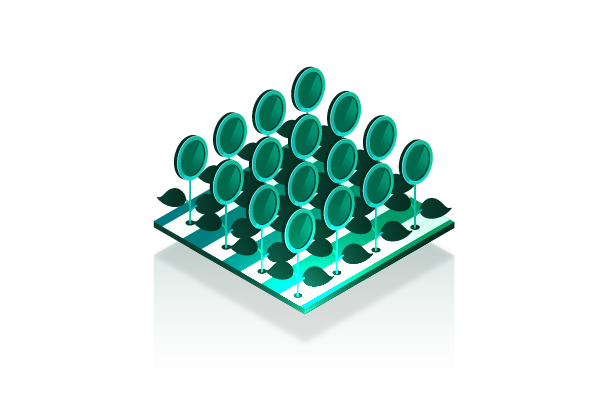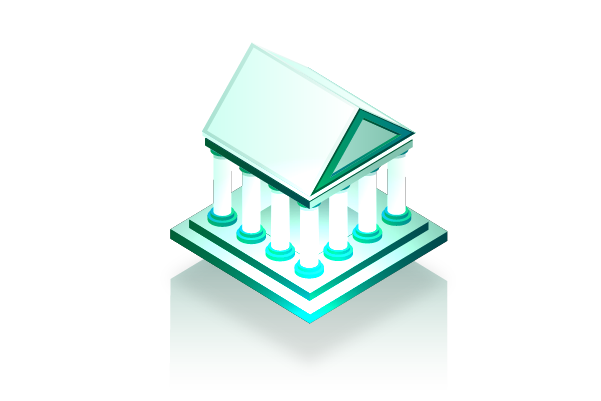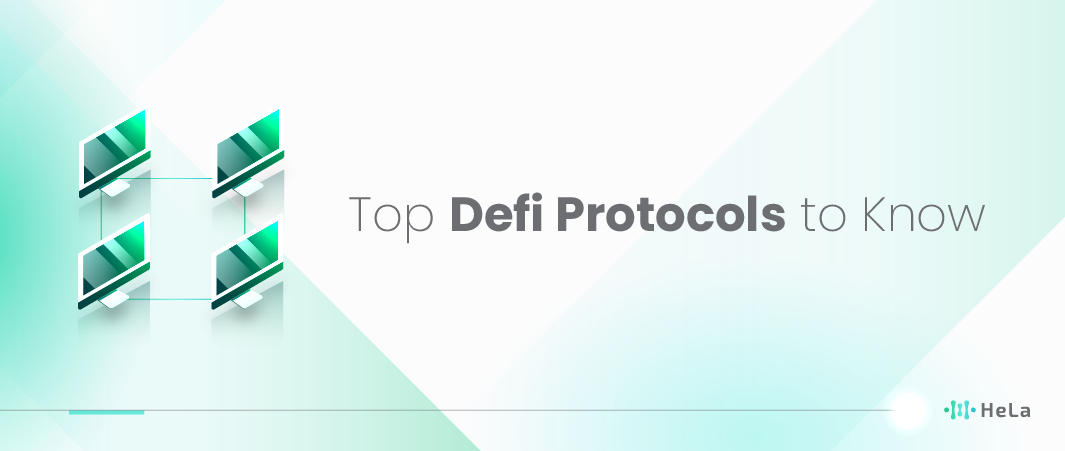The decentralized finance (DeFi) landscape has rapidly evolved, offering a plethora of financial services without the need for traditional intermediaries. As we step into 2025, the importance of understanding the leading DeFi protocols cannot be overstated. These protocols are reshaping the financial industry by providing innovative solutions that enhance accessibility, transparency, and efficiency. In this article, we will explore the top 10 DeFi protocols to keep an eye on in 2025. These protocols have proven their worth through robust performance, user adoption, and technological advancements.
Whether you are an investor, a developer, or simply curious about the DeFi space, this guide will provide valuable insights into the leading projects that are driving the future of decentralized finance.
From lending and borrowing platforms to decentralized exchanges and yield farming protocols, the DeFi ecosystem is rich with opportunities. Understanding these protocols will help you navigate the complexities of the DeFi world and leverage the benefits they offer. Let’s dive in and explore the top 10 DeFi protocols that are making waves in 2025.
Understanding DeFi Lending Platforms
DeFi (Decentralized Finance) lending platforms have emerged as a transformative force in the financial sector, offering a decentralized alternative to traditional banking services. These platforms allow users to lend and borrow cryptocurrencies without intermediaries, utilizing smart contracts on blockchain networks to automate and secure transactions.
Key Features of DeFi Lending Platforms:
- Decentralization: Unlike traditional banks, DeFi platforms operate without central authorities. Transactions are peer-to-peer and governed by smart contracts.
- Collateralization: Borrowers must provide collateral, usually in the form of cryptocurrencies, to secure loans. This reduces the risk for lenders but can also lead to liquidation if the value of the collateral falls below a certain threshold.
Also Read: Where Blockchain is Stored: Complete Explanation
- Interest Rates: Interest rates on DeFi platforms are determined by supply and demand dynamics. Lenders earn interest on their deposited assets, while borrowers pay interest on the loans they take out.
- Liquidity Pools: Users can contribute their assets to liquidity pools, which are used to facilitate lending and borrowing. In return, they earn a portion of the interest generated by the platform.
- Accessibility: DeFi lending platforms are accessible to anyone with an internet connection, offering financial services to individuals who may not have access to traditional banking systems.
The Role of Decentralized Exchanges in DeFi
Decentralized exchanges (DEXs) play a crucial role in the decentralized finance (DeFi) ecosystem. Here are some key points to understand their importance:
- Trustless Trading: DEXs operate without intermediaries, allowing users to trade directly from their wallets. This eliminates the need for a trusted third party, reducing the risk of hacks and fraud associated with centralized exchanges (CEXs).
- Liquidity Provision: DEXs enable liquidity pools where users can provide assets and earn fees. This decentralized liquidity provision supports the trading of a wide range of tokens, including those not listed on major CEXs.
- Innovation and Accessibility: DEXs are often at the forefront of financial innovation. They facilitate various DeFi activities such as yield farming, staking, and governance, making financial services accessible to anyone with an internet connection.
- Transparency and Security: Smart contracts govern DEX operations, ensuring transparency and security. Users can verify the code and audit transactions on the blockchain, fostering trust in the system.
- Reduced Counterparty Risk: By holding funds in personal wallets, users reduce counterparty risk. In CEXs, users must trust the exchange to hold and manage their funds, which can be problematic in the event of exchange failures or breaches.
- Global Reach: DEXs operate globally without geographic restrictions, offering equal access to financial services regardless of location. This inclusivity is a core principle of the DeFi movement.
- Lower Fees: Typically, DEXs have lower transaction fees compared to CEXs, as there are no intermediaries to take a cut. This cost-efficiency makes trading more affordable for users.
- Censorship Resistance: DEXs are less prone to censorship by governments or other entities. This resistance is vital for users in regions with strict financial regulations or unstable political environments.
Understanding these roles helps highlight the significance of DEXs in the rapidly evolving DeFi landscape, where decentralization and user empowerment are key principles driving growth and innovation.
Top 10 DeFi Protocols to Know in 2025

Decentralized Finance (DeFi) has revolutionized the financial landscape, providing innovative solutions and platforms that operate without traditional intermediaries. Here, we explore ten prominent DeFi platforms that have significantly impacted the market, each offering unique features and benefits. These platforms highlight the versatility and potential of DeFi in transforming the way we interact with financial services.
1. Uniswap (UNI)
Uniswap is a pioneering decentralized exchange (DEX) that has set the standard for others in the industry. Utilizing an automated market maker (AMM) model, Uniswap facilitates seamless token swaps without the need for order books.
Its substantial liquidity is a testament to its popularity among traders, allowing for efficient and large-scale transactions. Moreover, Uniswap places a strong emphasis on community governance, empowering token holders to vote on key protocol decisions, ensuring that the platform evolves in a decentralized and user-centric manner.
2. Lido Finance
Lido Finance addresses a significant challenge in Ethereum’s transition to Proof-of-Stake (PoS) by offering a liquid staking solution. Users can stake their Ethereum and receive stETH tokens in return, which can then be used in other DeFi protocols, providing liquidity and flexibility.
This approach not only supports Ethereum’s network security but also allows stakers to maintain liquidity, enabling them to earn staking rewards without sacrificing their ability to participate in the DeFi ecosystem.
3. Aave (AAVE)
Aave is a leading decentralized lending and borrowing protocol that offers users the ability to earn interest on their crypto deposits and access loans. By providing a wide range of collateral options, Aave accommodates various cryptocurrencies, enhancing its accessibility and appeal.
The platform’s innovative features, such as flash loans and rate switching, cater to both individual users and institutional investors, making it a versatile tool in the DeFi space.
4. Curve Finance (CRV)
Curve Finance stands out as a decentralized exchange optimized for stablecoin trading. Its design minimizes slippage, making it an ideal choice for traders and arbitrageurs who need to efficiently swap between pegged assets.
Curve’s unique liquidity pool structure is tailored to stablecoins, ensuring that users can trade large volumes with minimal price impact, which is crucial for maintaining stability in the DeFi market.
5. MakerDAO
MakerDAO is a cornerstone of the DeFi ecosystem, offering a decentralized lending platform that allows users to generate DAI, a stablecoin pegged to the US dollar. By locking up Ethereum as collateral in smart contracts, users can create DAI to use in various DeFi applications.
MakerDAO’s governance model ensures that the system remains robust and adaptive, with MKR token holders voting on key parameters and decisions, thus maintaining the stability and integrity of the DAI ecosystem.
6. Compound Finance (COMP)
Compound Finance is a trailblazer in the decentralized lending and borrowing sector. Users can earn interest on their crypto deposits or take out loans using their assets as collateral. Compound’s protocol operates transparently on the blockchain, with interest rates dynamically adjusted based on supply and demand.
The platform’s COMP token incentivizes participation and governance, allowing users to have a say in the protocol’s evolution and ensuring that it meets the needs of its diverse user base.
7. Balancer (BAL)
Balancer is an innovative automated market maker (AMM) protocol that allows users to create customizable liquidity pools with up to eight tokens. This flexibility reduces impermanent loss and provides more options for liquidity providers and traders.
Balancer’s dynamic fee structure and self-balancing portfolios make it a powerful tool for maximizing returns and minimizing risks, appealing to a broad spectrum of DeFi participants.
8. Synthetix (SNX)
Synthetix is a decentralized synthetic asset issuance protocol that enables the creation of on-chain synthetic assets, which track the value of real-world assets. This includes commodities, fiat currencies, and even other cryptocurrencies.
Synthetix’s innovative approach allows users to gain exposure to various assets without actually holding them, providing a unique and versatile trading experience. The protocol’s robust collateralization mechanism ensures the stability and reliability of synthetic assets, making it a cornerstone of the DeFi synthetic asset market.
9. Yearn Finance (YFI)
Yearn Finance is a yield aggregator that optimizes yields across various DeFi protocols. By automating the process of yield farming, Yearn Finance allows users to earn the highest possible returns on their crypto assets with minimal effort.
The platform’s strategies dynamically allocate funds to the most profitable opportunities, ensuring that users benefit from the best rates available. Yearn’s community-driven governance model, powered by the YFI token, ensures that the platform evolves in line with the needs and preferences of its users.
10. Sushiswap (SUSHI)
Sushiswap is a decentralized exchange and a fork of Uniswap, offering basic trading functions along with additional features like yield farming, on-chain analytics, and a governance token. Sushiswap’s community-oriented approach has fostered a vibrant ecosystem where users can earn rewards, participate in governance, and benefit from a variety of DeFi services. The platform’s continuous development and introduction of new features demonstrate its commitment to innovation and user satisfaction.
Yield Farming and Liquidity Mining in DeFi

Yield farming is a method in decentralized finance (DeFi) that allows investors to earn rewards on their crypto assets. Users lend their cryptocurrencies through decentralized applications (dApps) and earn interest or additional tokens as a reward. The concept is similar to earning interest on a traditional bank savings account but with potentially higher returns due to the volatile nature of crypto markets.
Key Points:
- High Returns: Yield farming can offer significantly higher returns compared to traditional finance. However, these returns come with higher risks.
- Liquidity Pools: Investors provide liquidity to pools on platforms like Uniswap, Sushiswap, or PancakeSwap. These pools facilitate trading on decentralized exchanges (DEXs) and, in return, participants earn fees and rewards.
- Staking: Some yield farming involves staking tokens in a smart contract. This can mean locking up tokens to earn rewards, typically in the form of additional tokens.
Liquidity Mining
Liquidity mining is closely related to yield farming but focuses more on providing liquidity to a specific protocol to earn rewards. It is a process where users supply their crypto assets to a protocol and receive governance tokens or other types of rewards in return.
Key Points:
- Incentivizing Liquidity: Protocols offer rewards to encourage users to provide liquidity. This is essential for the functioning of DEXs and other DeFi platforms.
- Governance Tokens: Often, rewards come in the form of governance tokens, which give holders the right to vote on protocol changes, thereby giving them a stake in the platform’s future.
- Decentralization: Liquidity mining contributes to the decentralization of DeFi platforms, as it distributes tokens to a broad base of users rather than a small group of early adopters or investors.
Risks and Considerations
While yield farming and liquidity mining can be highly profitable, they also come with significant risks:
- Impermanent Loss: This occurs when the value of tokens in a liquidity pool changes relative to when they were deposited. This can lead to a loss compared to simply holding the tokens.
- Smart Contract Risk: Bugs or vulnerabilities in smart contracts can lead to loss of funds.
- Market Risk: The value of the reward tokens and the staked tokens can fluctuate wildly, leading to potential losses.
Yield farming and liquidity mining are innovative ways to earn returns on crypto assets in the DeFi space. However, they require a good understanding of the risks involved and the mechanisms of the platforms being used. Proper research and risk management strategies are essential for anyone looking to participate in these activities.
Governance and Decentralization in DeFi

Decentralized Finance (DeFi) represents a paradigm shift in the financial industry, moving away from centralized institutions to decentralized protocols. Governance and decentralization are two fundamental pillars that support this ecosystem.
Governance in DeFi
Governance in DeFi refers to the mechanisms and processes through which decisions about the protocol are made. Unlike traditional financial systems, where decisions are typically made by a central authority, DeFi protocols often employ decentralized governance models. These models can include:
- Token-based Voting: Governance tokens are distributed to users who can vote on proposals related to the protocol’s future. For example, in protocols like Uniswap and Aave, token holders can propose and vote on changes such as fee structures, new features, and upgrades.
- DAO (Decentralized Autonomous Organizations): DAOs are organizations represented by rules encoded as computer programs that are transparent and controlled by organization members. They operate without a central governing body. Decisions are made collectively by the community through a voting process.
- Consensus Mechanisms: These mechanisms ensure that all nodes in a network agree on the state of the blockchain. Proof of Stake (PoS) and Proof of Work (PoW) are common consensus mechanisms that help maintain the integrity and security of the network.
Decentralization in DeFi
Decentralization is the distribution of control and decision-making away from a central authority. In DeFi, this means that no single entity has complete control over the protocol. Key aspects include:
- Distributed Ledger Technology (DLT): DeFi relies on blockchain technology, where a distributed ledger records all transactions across multiple nodes. This ensures transparency, security, and immutability.
- Smart Contracts: These self-executing contracts with the terms directly written into code enable decentralized operations without the need for intermediaries. They automate transactions and enforce agreements, reducing the need for trust in a single party.
Also Read: 7 Best Crypto Narratives to Know in 2025
- Interoperability: DeFi protocols are often designed to interact with one another seamlessly. This interoperability allows for a more cohesive and integrated financial ecosystem, where assets and data can move freely across different platforms.
- Permissionless Access: One of the core tenets of DeFi is that anyone with an internet connection can access financial services without the need for traditional intermediaries like banks. This democratizes access to financial products and services.
Understanding governance and decentralization is crucial for comprehending the potential and challenges of DeFi. These elements not only empower users but also ensure that the ecosystem remains resilient, transparent, and inclusive.
Conclusion
The DeFi landscape in 2025 is vibrant and full of potential, driven by innovative protocols that are redefining the financial industry. By understanding the top 10 DeFi protocols, you can stay ahead of the curve and make informed decisions in this dynamic space.
As we have explored, protocols like Aave, Uniswap, and MakerDAO are leading the charge with their unique offerings and robust platforms. They provide a glimpse into the future of finance, where decentralization, transparency, and accessibility are paramount.
Whether you are a seasoned investor or a newcomer to the DeFi world, staying informed about these top protocols will empower you to navigate the complexities of the DeFi ecosystem and capitalize on the opportunities it presents. The future of finance is here, and it is decentralized.
Disclaimer: The information provided by HeLa Labs in this article is intended for general informational purposes and does not reflect the company’s opinion. It is not intended as investment advice or recommendations. Readers are strongly advised to conduct their own thorough research and consult with a qualified financial advisor before making any financial decisions.

Joshua Soriano
I am a writer specializing in decentralized systems, digital assets, and Web3 innovation. I develop research-driven explainers, case studies, and thought leadership that connect blockchain infrastructure, smart contract design, and tokenization models to real-world outcomes.
My work focuses on translating complex technical concepts into clear, actionable narratives for builders, businesses, and investors, highlighting transparency, security, and operational efficiency. Each piece blends primary-source research, protocol documentation, and practitioner insights to surface what matters for adoption and risk reduction, helping teams make informed decisions with precise, accessible content.
- Joshua Soriano#molongui-disabled-link
- Joshua Soriano#molongui-disabled-link
- Joshua Soriano#molongui-disabled-link
- Joshua Soriano#molongui-disabled-link

